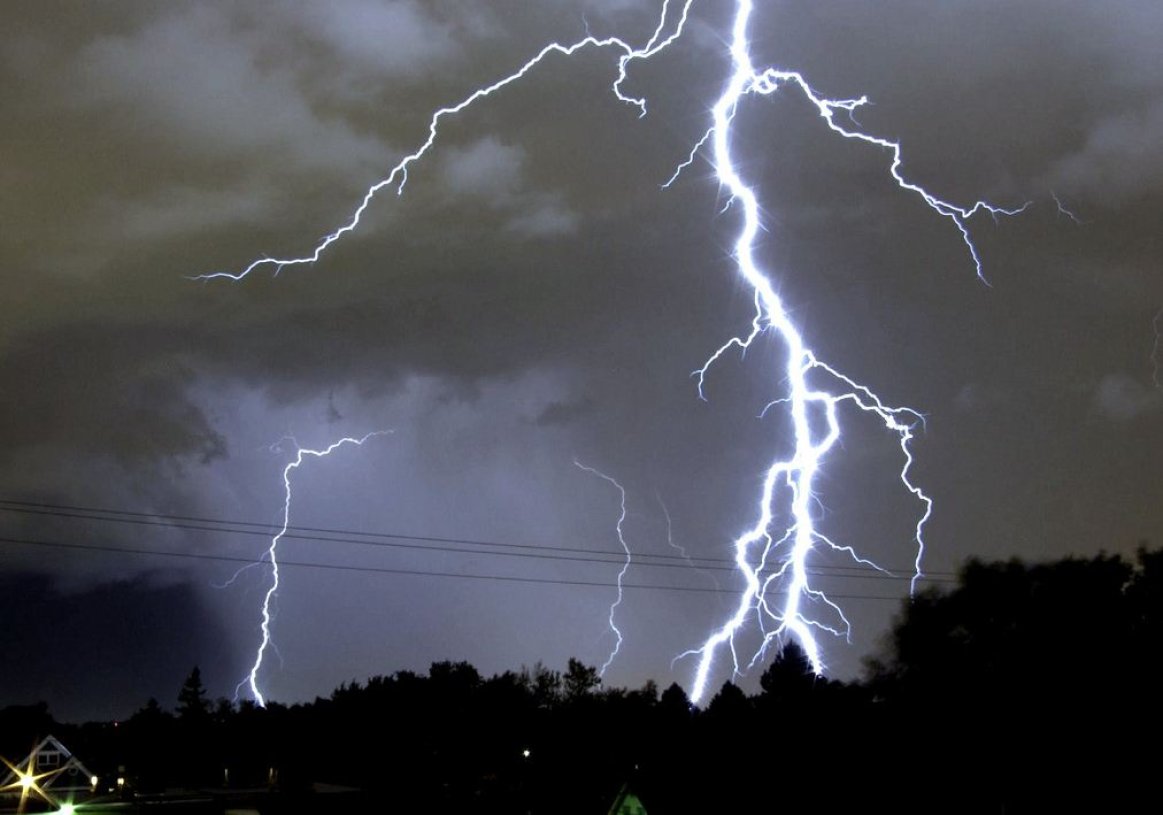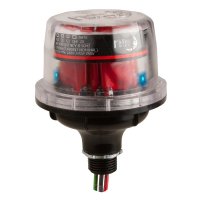


Photovoltaic arrays are typically installed on rooftops, near power transmission lines, constructed of aluminum frames, and must be free from objects that shade them. Optimum exposure to sunlight also means increased vulnerability during electrical storms. Studies indicate that lightning is the number one cause of catastrophic failures in solar electric systems and components.
But is lightning protection important?
Lightning can strike anywhere at any time without warning. In most cases a “direct hit” is rare, in fact, the more common “near strike” hit (to the ground or within several hundred feet) can send thousands of volts into wiring systems if the proper precautions are not taken.
Grounding
The NEC (National Electrical Codebook) requires that all exposed metal surfaces be grounded regardless of system voltage.
- Single Point Ground- A ground wire that connects to a ground rod or ground wire under the electric meter. If you have a panel array that is more than 50 feet from the rest of the system, it should have it's own frame/mount ground (not electrical ground).
- Ring Ground- A #2 AWG bare wire buried a minimum depth of 30" in the soil encircling a structure.
- Halo Ground- Consists of bare or insulated wire and runs around the ceiling of a structure and bonded to the corners of a buried ring ground. It acts as a shield for reducing RFI (radio frequency interference) from electromagnetic fields.
- Ufer Ground- Metal bars that are encased in concrete and buried a few feet under ground to be used when terrain or other barriers prevent single point grounding.
- Isolated Ground- An isolated ground is a separate, insulated safety ground wire that connects an equipment cabinet to the nearest ac distribution neutral-ground bond. It is used to maintain isolation from building conduit, which can conduct high frequency noise during an electrical storm.
PV systems have DC and AC circuits and both must be properly grounded. If the PV array system is mounted to the roof NEC 690.5 requires a GFP device be included. Grounding is essential and using the proper PV hardware is as important as using it correctly.
Since the primary focus of NEC requirements is electrical safety not lightning protection it is important to note NEC requirements can be extended.
Arrestors and Capacitors
In general, surge arrestors go across live wires with another wire going to ground so if the voltage goes above a certain level, it begins to conduct, shorting the higher voltage to ground.
Arrestors usually do not react fast enough to work alone. Surge capacitors act extremely fast and catch those high voltage spikes on the AC line for the surge arrestor. For the best defense in lightning protection combine a DC surge arrestor on the array side and a surge arrestor and capacitor on the AC side.

Comments
I'm going to put lightning rod finials on my metal roof, with its parallel conductor paths to additional ground rods. Those ground conductors will be "short fat straight"
For the NEC ground, like that copper wire that gets connected to the panels and on the ground lug on the Enphase inverters, that path can be "long skinny crooked" -- and meet Code. On the roof, the two systems should be connected together. As far as the lightning is concerned, MOST of its charge will follow the lower impedance paths to ground, leaving less energy at the DC terminals and AC terminals for those Lightning Arrestors to deal with.
Don't despair if you can't afford to install a fancy system of grounds. But start somewhere and add later. If your system of panels gets only one ground rod installed, make sure there are not sharp bends and kinks in the wire that follow the architectural features of the building -- try to put in gentle bends. Short Fat Straight -- lightning finds that attractive! Make your AC ground system look ugly to it.
--just my opinion folks--
sounds like a good idea to me ,Im in the process of installing a 3.6 kw system using Enphase inverters on the steel roof of my garage which is about 40 ft or so from my house and I asked an electrician about another ground rod installed for the solar system and he had told me thats a bad idea, not sure what my utilty company Duke Energy will have to say about a seperate ground rod with finials,are to tieing to the end of the ground wire of the inverters and rails?Thanks..
Indman,
If you are installing on a separate structure from where your service panel is, then you should absolutely be installing a separate ground rod. Even if there is a sub panel in your garage, you will still benefit from having at least one grounding path for your PV equipment which employs the "short, fat and straght" rule-of-thumb offered by ken_crawley, above.
Is there a lightning arrestor that could be used on the DC side when using Enphase inverters?I have power lines near my system and I also have a steel roof on my unattached garage.I will be adding a lightning rod using the short fat straight and crooked # 6 ground wire on my panels and inverters.
Indman,
There's really no way to get to the DC side of the enphase inverter. You'd have to put a mini arrestor at every module with a shunt to the ground. Enphase touts their inverters as "inherently more resistant to lightning because of the distributed architecture", and they test to 6kV (which doesn't mean all that much). Better to put your effort into the ground conductor itself. Here's a good arrestor to instal on your service panel:
https://www.greentechrenewables.com/product/midnite-solar-mnspd-600-640vdc-485vac-lightning-arrestor
The "start somewhere and add later" advice is good. Even using 1 size larger wire for your equipment ground can help. "Short, Fat and Straight" is an excellent rule-of-thumb for lightning conductors - just imagine a heavy truck travelling at a high speed - it's not going to handle narrow, twisty roads for very long...lightning is that heavy truck and you don't want it to hit your inverter.
Keep in mind that there is a difference between a direct strike on the PV system and a strike that is close enough to induce a voltage spike in any metal in the area. Nothing will protect the array from a direct strike, if it happens it will toast the system.
So lightning protection is a two part process. First make sure there is a lightning arresting system completely separate from the PV system designed to attract lightning strikes and shunt them to ground. This is where the short, fat, and straight part comes in for all those conductors. The rest of lightning protection is about shunting that induced voltage off the PV system before it damages anything. Those requirements are much closer to the normal grounding requirements with the addition of surge arrestors.